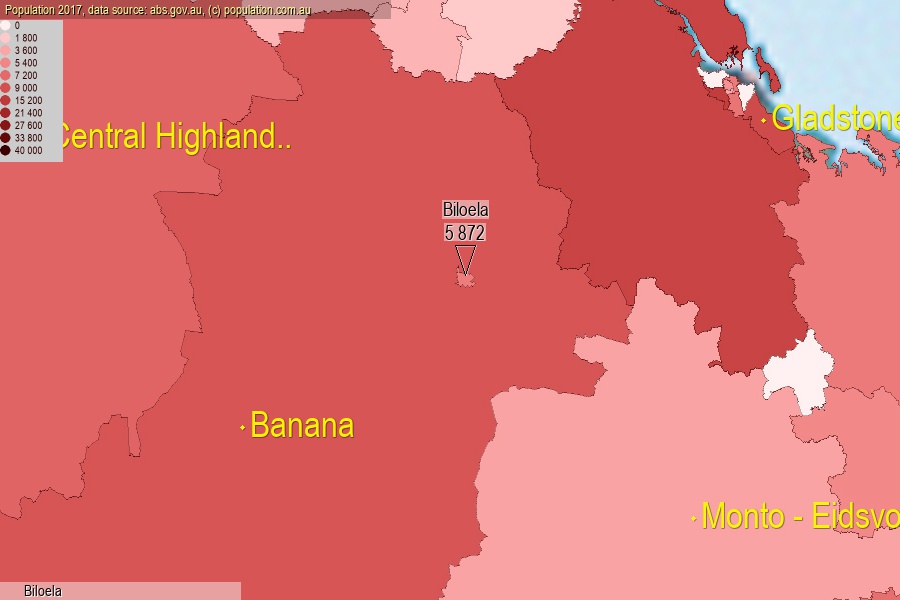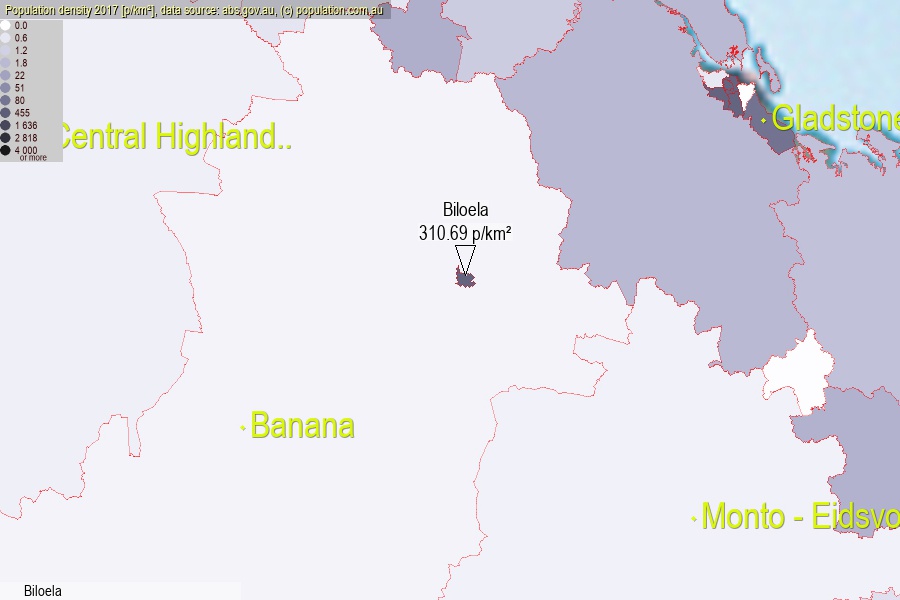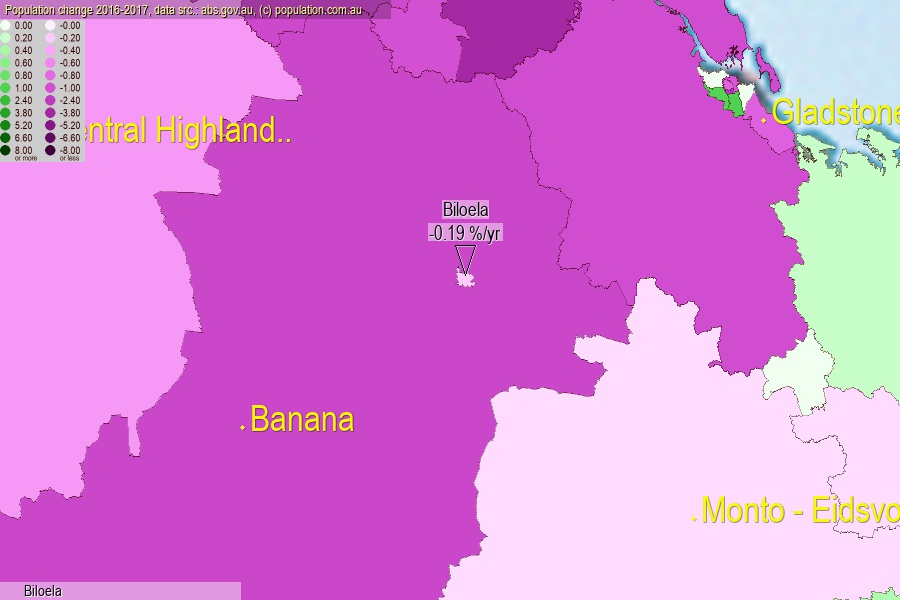 population.com.au
population.com.auLast official estimated population of Biloela (as Statistical Area Level 2) was 5 872 people (on 2017-06-30)[2]. This was 0.02% of total Australian population and 0.118% of QLD population. Area of Biloela is 18.90 km², in this year population density was 310.69 p/km² . If population growth rate would be same as in period 2016-2017 (-0.19%/yr), Biloela population in 2025 would be 5 785. [0]



Click to enlarge. Biloela is located in the center of the images.
Population [people], population density [p./km²] and population change [%/year] [2]
View borders » (new window) [4]
[2001-2002] -0.18 %/Yr.
[2002-2003] -0.09 %/Yr.
[2003-2004] +0.19 %/Yr.
[2004-2005] +0.97 %/Yr.
[2005-2006] +1.28 %/Yr.
[2006-2007] +1.04 %/Yr.
[2007-2008] +1.23 %/Yr.
[2008-2009] +0.89 %/Yr.
[2009-2010] +0.35 %/Yr.
[2010-2011] +0.58 %/Yr.
[2011-2012] +0.31 %/Yr.
[2012-2013] +1.49 %/Yr.
[2013-2014] -0.68 %/Yr.
[2014-2015] -2.25 %/Yr.
[2015-2016] -1.34 %/Yr.
[2016-2017] -0.19 %/Yr.
[0] Calculated with linear interpolation from officially estimated population
[1] Read more about SA2 and Australian Statistical Geography Standard (ASGS) on abs.gov.au
[2] Population data from Australian Bureau of Statistics (Population and density: 2017; change: 2016-2017)
[3] Digital Boundaries: Australian Statistical Geography Standard (ASGS) 2016.
[4] Border coordinates are simplifyed using Ramer-Douglas-Peucker algorithm.